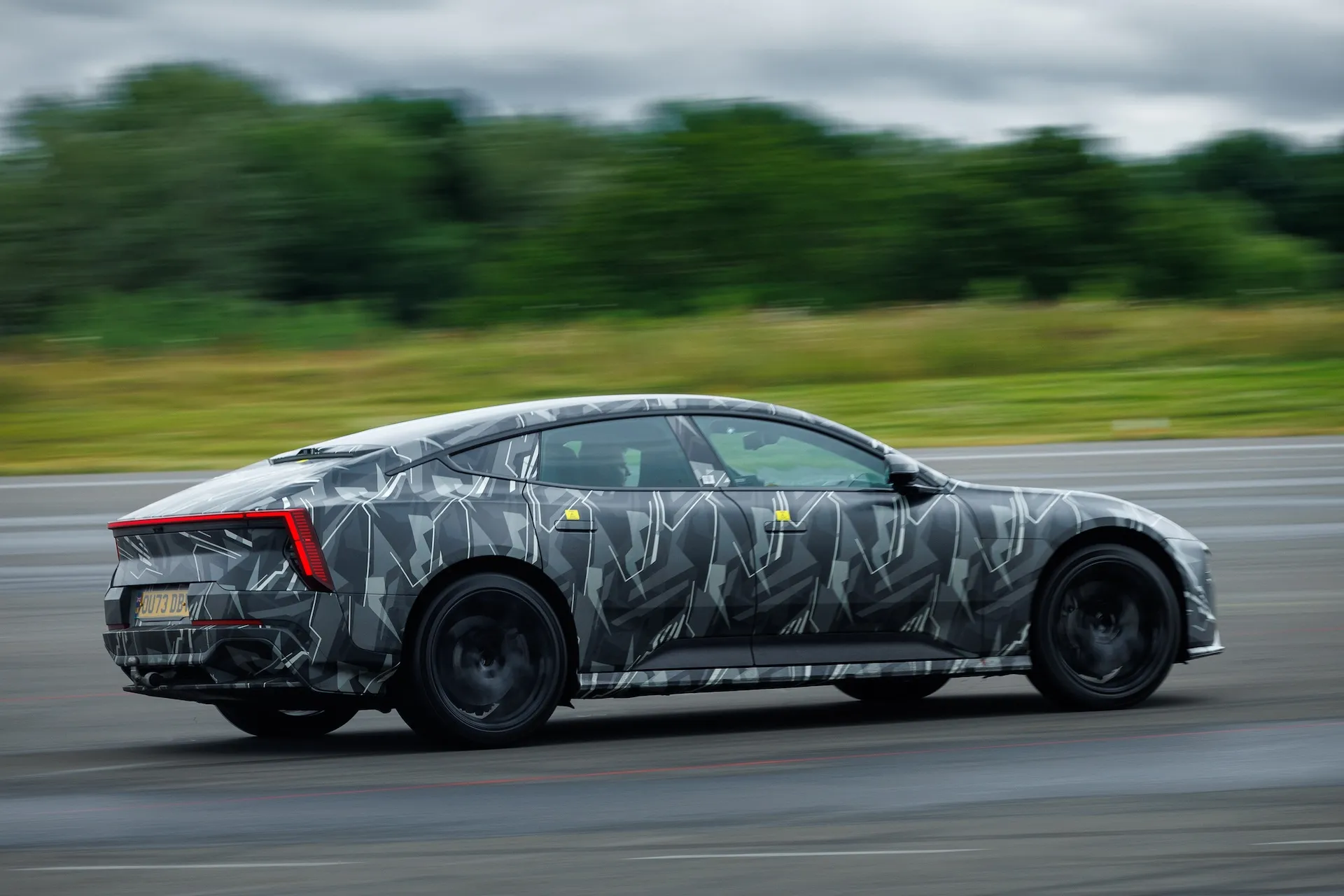- Polestar’s next new vehicle will be the 5 electric sedan
- Polestar has the Model S in its sights—and also, the Lucid Air
- Engineered in the U.K., the 5 has a bonded-aluminum body like those from Jaguar
“We’re 80 percent done, but there’s more to do,” said Polestar’s Chris Baguley as he tossed a Polestar 5 development prototype through a set of cones at rising speeds. Baguley, the principal engineer for vehicle dynamics, spends many hours each week thrashing prototypes of the electric performance sedan around test tracks. The goal is to dial in the suspension tuning that separates a desirable premium performance car from a pedestrian mass-market model.
From the roomy rear seat, despite the car’s in-process interior, it was hard to discern what that remaining 20 percent might require. Baguley said the 2026 Polestar 5 is tuned to understeer slightly as drivers approached its limits, the predictable, expected behavior in cars these days. From the back, I couldn’t sense the understeer he felt through the steering wheel. Instead, I heard the rear tires starting to squeal as the line around the cones tightened.
Riding shotgun, I felt the understeer a touch more. Its compact front suspension gives the 5 a sports-car feel, we later learned, while the taller rear suspension towers contribute to rear-seat comfort. Overall, in our brief 20 minutes on the course, the car seemed as if it might be viable competition for the handful of high-dollar EV performance sedans. Whether it can match the rocket-like acceleration of a Lucid Air Sapphire or the superb, intuitive handling of a Porsche Taycan remains to be seen once production cars emerge next year.
Polestar 5 prototype ride

Polestar 5 prototype ride
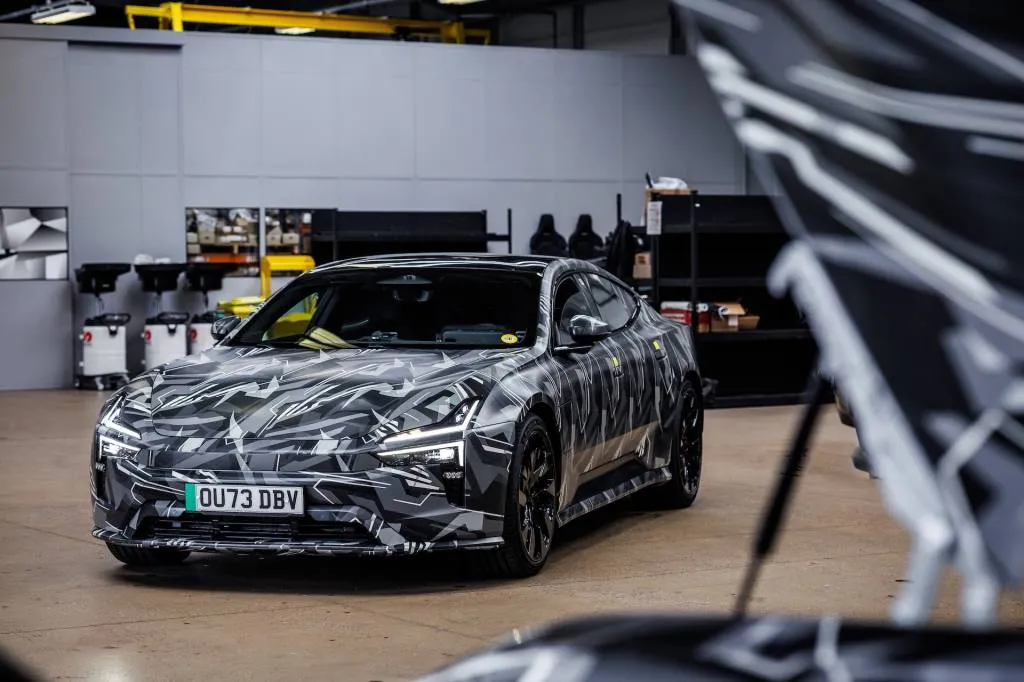
Polestar 5 prototype ride
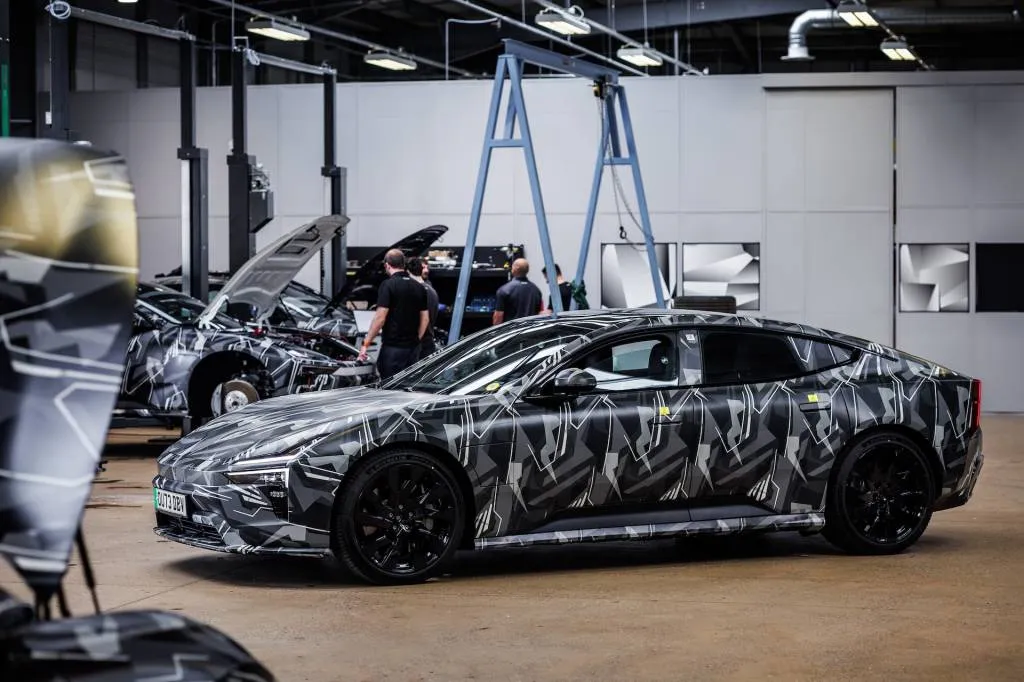
Polestar 5 prototype ride
Future Polestar plans, finally
With the 2025 Polestar 3 SUV now in early production at a shared Volvo-Polestar plant in Ridgeville, South Carolina, and the 2025 Polestar 4 fastback coupe-crossover following close behind (initially from China, but from South Korea next year), the Swedish startup owned by China’s Geely can finally talk about its future plans.
The Polestar 2 that introduced the brand to the U.S. public has been its sole volume entry since 2021. With steady refinements that have made it more competitive and alluring—including a switch this year from front- to rear-wheel drive for its single-motor models—that compact utility EV has transcended the platform it shares with two small Volvos, which include both battery-electric and internal-combustion variants.
The new 2025 Polestar 3 SUV is later to market than planned, due to software bugs shared with its platform-mate the 2025 Volvo EX90 electric three-row crossover. Now that the 3 is coming to market, with the Polestar 4 on its heels, the brand was willing to show off its R&D capability to a small group of auto journalists.
That’s how we found ourselves being tossed around in the next Polestar on a handling course set up on a huge parking lot outside Coventry, in the West Midlands region of England—the center of what remains of the country’s auto industry. The company’s goals were to underscore the strength of its U.K. development team, show off its current and new, expanded R&D facilities, and to offer a limited look at how it’s developing the Polestar 5—which rides on Polestar’s first dedicated architecture. The 2, 3, and 4 share underpinnings with various Volvo and Geely models, but the Polestar 5’s bonded-aluminium structure will be unique to that car when it launches.
Asked if it would remain so, or whether other Volvo or Geely products would end up using it as well, CEO Thomas Ingenlath hedged elegantly. “We are happy to make other people in the [Geely] group happy,” he said. “It would be selfish to keep it for ourselves.” Translation: Yeah, you’ll see it under future Volvos and probably other Geely brands as well.
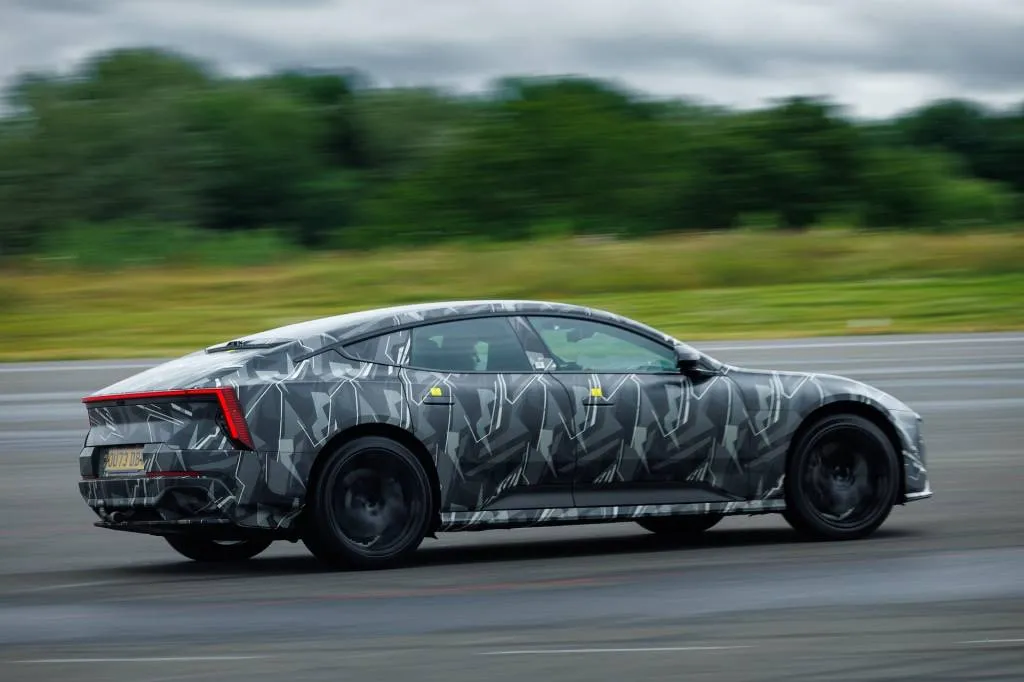
Polestar 5 prototype ride
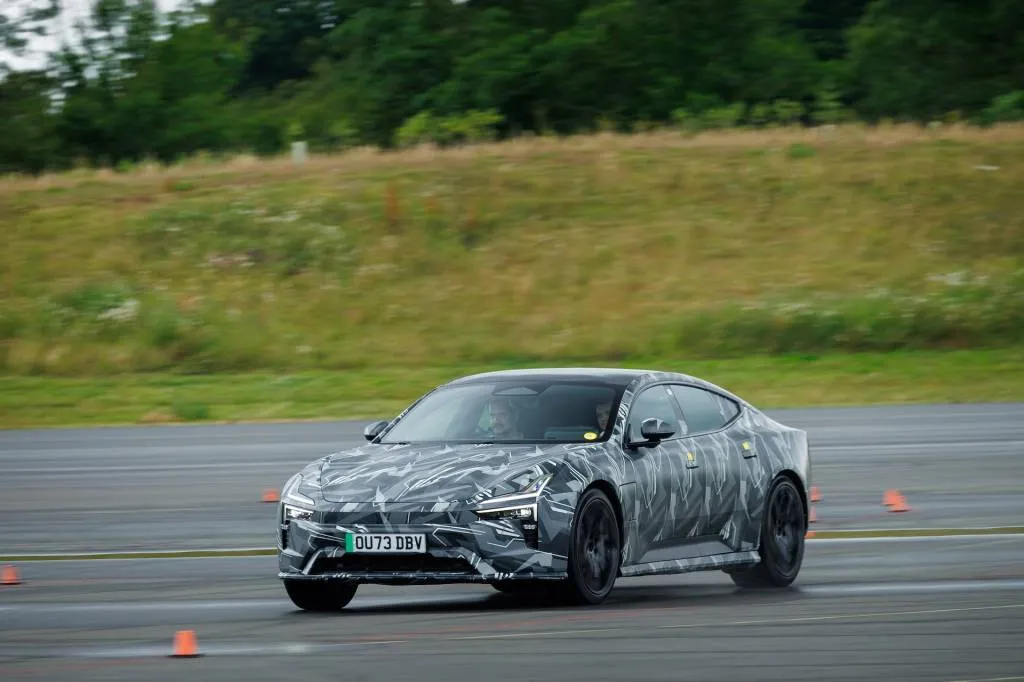
Polestar 5 prototype ride
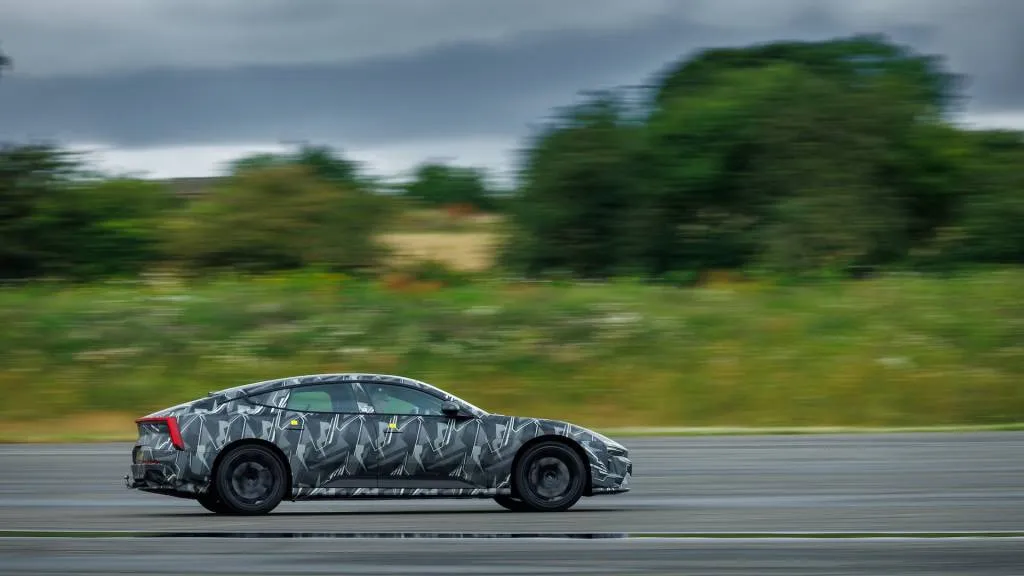
Polestar 5 prototype ride

Polestar 5 prototype ride
Polestar 5: Bonded body, made from aluminum
Our small group of reporters spent parts of two days touring Polestar’s R&D facilities in the U.K. First were its existing premises at MIRA, a collaborative center for automotive development since it was founded in 1946. The next day we visited a much-expanded site into which Polestar was still moving. It has more than twice the square footage, meaning staff will spend far less time playing Jenga with development vehicles moved and parked among limited test stations.
Our tours were conducted by Steve Swift, director of vehicle engineering, and Pete Allen, deputy CTO and head of R&D in the U.K. Like many staff there, both men had worked on a remarkable variety of vehicles over their careers, from Formula 1 to premium brands and then some—including the plug-in hybrid London taxi. As it turned out, Swift had been part of the Lotus team that tuned the suspension of my 1991 Isuzu Impulse, a car so obscure many auto-industry colleagues don’t know it. Think of the Polestar team as engineers of all trades, developers who can bring a vehicle from conception to reality…regardless of its background.
Both men, and vehicle dynamics engineer Baguley as well, were fairly open and direct in answering an onslaught of questions from our group. That said, the photos in this article were taken by the company and are the only ones allowed—stickers covered the lenses of our phones, laptops, and cameras to prevent any unauthorized images.
Polestar’s new facility includes a giant oven, large enough to fit an entire car. It’s used to cure the bonded-aluminium structure of Polestar 5 prototypes to achieve maximum strength. Our hosts declined to comment on either the makeup of the epoxy adhesive or the temperatures at which it’s cured; there’s a lot of intellectual property in that data they don’t care to share.

Polestar 5 prototype ride

Polestar 5 prototype ride
Polestar 5, from Precept to production
The existing and new prototype facilities are there for a single purpose: to develop what was unveiled in April 2020 as the Polestar Precept concept into a viable production vehicle, and to ensure it meets its design specs and performs adequately before it transitions into production at a purpose-built factory in Chongqing, China.
The development team is particularly proud of being able to keep the low nose and cowl height of the Precept concept—requiring a front suspension design particularly compact in its vertical dimension, with only 160 mm (6.3 inches) of front-wheel travel from fully extended to bump stop. That low nose not only aids in reducing aerodynamic drag, but gives the Polestar 5 its distinctive sport-sedan look—putting it in the company of its desired competitors, the Porsche Panamera and Taycan and the Tesla Model S.
The Chongqing plant will also produce the 2026 Polestar 6 two-seat open sports car, about which the execs said almost nothing at all beyond acknowledging its existence. Only one nugget about the 6 emerged: By removing the “foot garage” in the 5’s battery pack that gives rear-seat riders a more natural seating position (meaning not so knees-up), the same battery capacity can be used for a car with a shorter wheelbase, meaning the 6. Once the underlying structure has been proven in the 5, that future model and others should also take far less time to develop.
The Polestar team stayed mum about the batteries used in the 5, their cells, their chemistry, and any other specifications. They acknowledged its capacity was “111-ish kilowatt-hours,” and that it would charge at 800 volts, but otherwise, “we’re not ready to talk about that yet” was the refrain.
A phrase that cropped up more than once to describe Polestar was “pure progressive performance”. While Porsche’s Panamera is hardly a progressive design, especially given its combustion engine, it sits right at the heart of the market Polestar wants to enter with the 5.
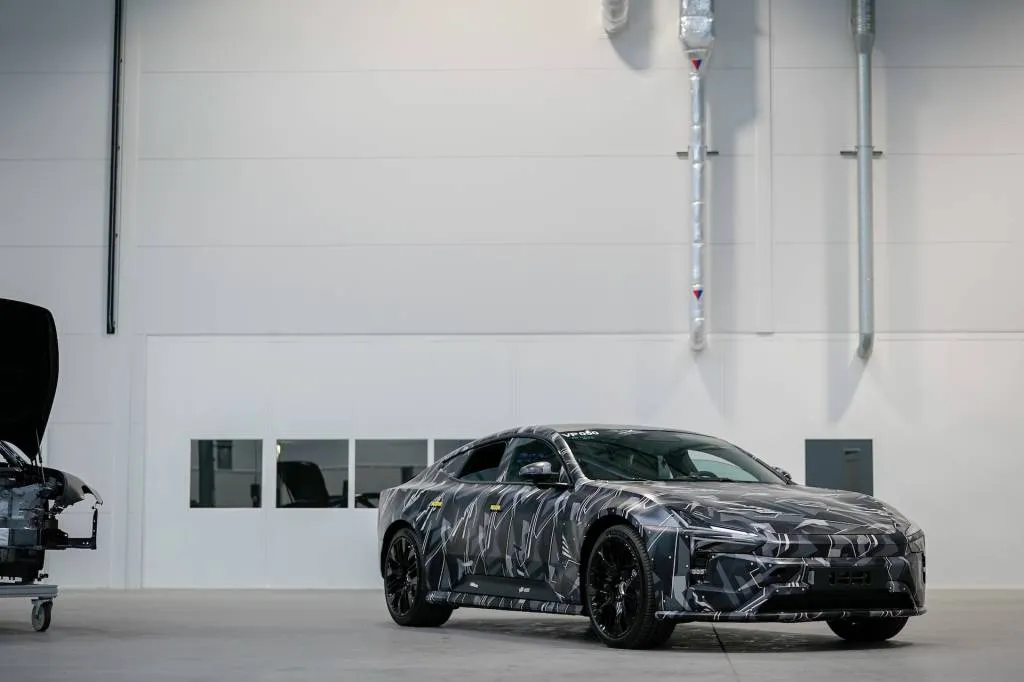
Polestar 5 prototype ride
Polestar 5: Tesla Model S, yes—but also Lucid Air?
Over and over, CEO Ingenlath stressed that Polestar is a Swedish company that develops European cars there and in the U.K. for the world. The 2026 Polestar 5’s handling will be tighter, more controlled, and more precise (“more European”) than, for instance, a car like the Lucid Air—whose roadholding and suspension behavior are “quite American, don’t you think?”
Polestar is, however, largely controlled by Chinese maker Geely, as is its sibling Volvo. While the 2 and 4 are built in China, export versions of the latter will move to a plant in South Korea next year. That’s a result of the brand deliberately diversifying its global production footprint in response to growing trade tensions between China and both the European Union and the U.S.
Polestar is still an unknown brand to the vast majority of American car shoppers, even many EV advocates and owners. That should start to shift once the 3 SUV debuts, launching into the premium-priced heart of the U.S. SUV market. As for the 4, it remains to be seen how even tech-forward EV adopters will take to a utility vehicle that has no rear window—only rear-view cameras.
That’s the case for the 2026 Polestar 5, too. The bodies in white have a large structural crossmember passing through the space you’d expect to house a rear window. Achieving a pure fastback shape is the reason, said execs: the glass roof panel simply extends to the top of the trunk lid.
Like the brand itself, and the future prospects of Sino-Scandinavian electric cars in North America, the market will ultimately render its verdict on that innovation. Meanwhile, its U.K. R&D facilities are ramping up for what will likely be many more Polestar models. We look forward to driving them in real-world conditions.
Polestar provided airfare, lodging, meals, and plenty of drive time in RHD Polestar 2s to enable Motor Authority to bring you this first-person report.

